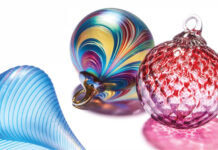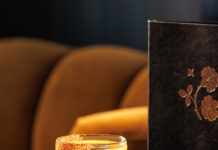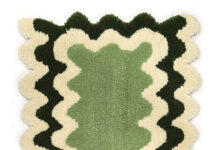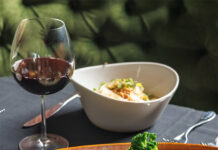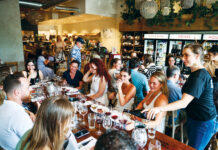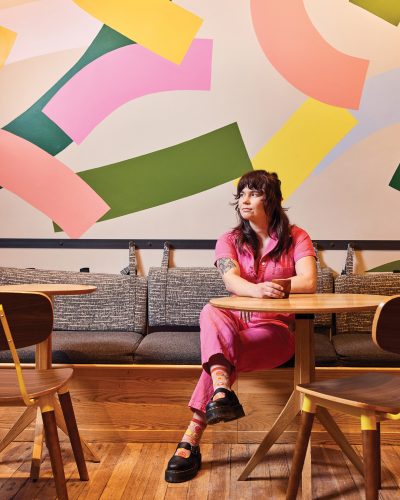
At Huckleberry Roasters, sustainability isn’t just a buzzword, it’s a guiding principle. At its eight locations across Denver— the original on Pecos Street, the Dairy Block, Tennyson, Baker, Wheat Ridge, Larimer Square, Southglenn, and Congress Park—Huckleberry is reducing its environmental footprint by powering its facilities with wind, composting and recycling, and sourcing responsibly farmed coffee.
Huckleberry roasts 5,000 pounds of coffee every week, offering six different types of roasts, seasonal flavors, and unique blends like Phantom Limb Roast, which showcases the fruit origins of coffee. Every batch is roasted with precision, relying on both tactical and olfactory cues to ensure perfect caramelization. The beloved local brand is also distributed to major cities like Chicago, San Francisco, Portland, and Nashville.
Rachel Crellin, general manager at the Tennyson location, explains how sustainability, community, and a deep love of craft coffee fuel Huckleberry’s success.
What role do sustainable practices play in crafting great coffee?
“One of the best ways to practice sustainability is to source local ingredients whenever possible. Not only will things be of higher quality and taste better, but supporting local businesses and farmers is great for the local economy and is also the most environmentally sustainable.”
What sets Huckleberry apart from other coffee shops?
“I think Huckleberry stands out in the way that they prioritize taking care of people— from the people who grow our coffee to the folks who work at Huck. It’s a great place to work, and to me, it’s always felt like a positive and supportive environment that encourages people to be themselves.”
What are three words to describe the Tennyson location?
“Colorful, quirky, and industrial.”
Which milk is coffee’s best friend?
“This might be a hot take, but oat milk! It has a more neutral flavor than other milk alternatives, and you can still get really good milk texture for latte art.”
How would you describe Denver’s coffee culture?
“The coffee scene feels like a smaller community that is more collaborative than competitive.”
What are your favorite latte art designs to make?
“I’m pretty much always pouring tulips because they’re very cute and also not super complicated.”
What advice would you give someone looking to elevate their coffee experience at home?
“Invest in a good coffee grinder!”
What’s next for the coffee world?
“People are starting to seek out community again more than before, so it’s likely café spaces will be a vital part of that. I think people are craving more interaction and connection IRL, and the broader coffee community can play a huge role in fostering those experiences.”

